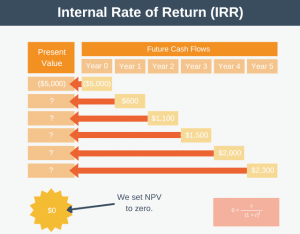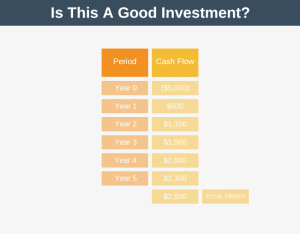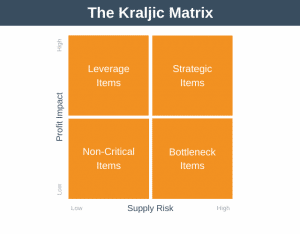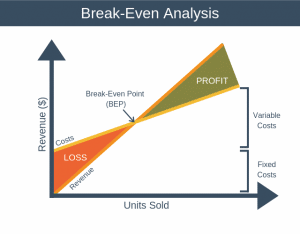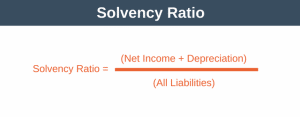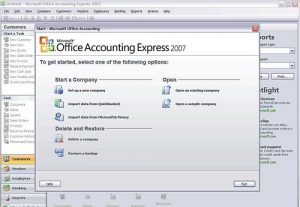If you missed part 1 of this glossary of financial terms for general managers you can find it here. In this final part of the two part series we will cover item 21 onwards from the list below.
- Profit & Loss (P&L)
- Balance Sheet
- Income Statement
- Cash Flow Statement
- Contribution Margin
- Expense Allocation
- Return on Investment (ROI)
- Cost of Capital
- Net Present Value (NPV)
- Internal Rate of Return (IRR)
- Free Cash Flow
- Real Options Analysis/Theory
- Seed Money
- Stock Options
- Dilution
- Antidilution
- Share Buybacks
- Warrants
- Earn-Up and Earn-Out
- Price/Earnings Ratio (P/E Ratio)
- Carve Out and Spin Off
- Public Debt
- Debt Ratings
- Depreciation
- Amortization
- Impairment
- Goodwill / Intangible Assets
- EBITDA
- Return on Equity (ROE)
- Book Value
- Earnings Per Share (EPS)
- Market Capitalization
- Dividends
- Burn Rate
21. Carve Out and Spin Off
These allow you to transform part of a company into a separate division or subsidiary. In a carve-out, a new legal entity (organization) is created and shares are offered to public investors via a listing on a stock exchange. This is known as an IPO, or Initial Public Offering. The money raised from the IPO can go to the parent organization or into the new organization, or a combination of both. A spin-off is very similar to a carve-out, except that the parent organization gives shares in the new organization directly to its existing shareholders tax-free. Note that a spin-off can also contain a carve-out, so existing shareholders are given shares and shares are made available to general investors via an IPO.
22. Public Debt
This is where companies issue bonds via a bond market to raise money. Companies use the public debt market because it can provide them with a lower cost of capital than other forms of finance, thus increasing their ultimate return.
23. Debt Ratings
These are a measure of how risky it is to invest in the bonds offered by individual companies. The higher the rating for the company, the more safe their bonds are considered to be. A company with a higher rating will be able to issue bonds on the debt market with a much lower interest rate than a company with a very low debt rating, because obviously the company with the lower rating is considered to have a higher chance of defaulting, and thus investors will demand a higher return or interest rate for the extra risk they are taking on. The highest debt rating is ‘AAA’ and the lowest is ‘C’, which is also referred to as ‘junk’. The two main debt ratings agencies are Moody’s and Standard & Poor’s.
24. Depreciation
This is the reduction in value which happens to companies assets over time as they are used. For example, a laptop purchased three years ago for $3,000 will perhaps only be worth $50 today. This depreciation must be accounted for on a company’s income statement as a non-cash expense. There are a number of different accounting methods for calculating and applying depreciation.
25. Amortization
This is similar to depreciation but relates to intangible assets (goodwill) such as patents and brand. Note that amortization can also refer to decreasing a loan principle over time.
26. Impairment
From time to time companies will analyse all their assets, both tangible and intangible, to determine if their value differs from the value as stated on the balance sheet. If the value stated on the balance sheet is actually more than the asset is worth then the value on the balance sheet will need to be reduced. This reduction is shown as a cost on the income statement, and it is this cost that is known as impairment.
27. Goodwill / Intangible Assets
These are simply non-physical assets. Any goodwill assets a company has will be shown on their balance sheet. Goodwill most usually occurs when one company buys another. Goodwill is simply the difference between the book value of the company being acquired and the price paid to purchase it. For example, if a company has $1 million of physical assets such as office equipment, offices, etc and is bought for $4 million, then $3 million must be placed in the balance sheet of the acquiring company as goodwill. Note that other types of goodwill include intellectual property, patents, and brand names. For example, only one company has the right to use the Coca-Cola brand name on its products. This brand name is not a tangible asset but it is clearly worth billions of dollars. Just like other assets on the balance sheet, intangibles and goodwill will be amortized by the company over time.
28. EBITDA
This stands for Earnings Before Income Tax, Depreciation and Amortization and is commonly pronounced “e-bit-da”. It is commonly used as a measure of a company’s operating performance to understand whether they are comfortably able to service their debt. How EBITDA is measured can change from year to year even within the same company, so it needs to be understood in conjunction with other financial metrics, such as free cash-flow, to get a solid understanding of a company’s performance.
29. Return on Equity (ROE)
This is a measure of profitability relative to shareholder equity, and in its most simple form is calculated as net income divided by shareholder equity. ROE shows how well a firm invests it’s funds to generate a profit. It measures how well a firm makes money from net assets – net liabilities.
30. Book Value
This is simply the value of a company as it is defined on it’s balance sheet. Intangible assets and goodwill are not included in book value, so essentially it is the value shareholders will get if the company was liquidated. Book value will obviously be very different from the price you might pay to acquire a company. If a company’s market capitalization ever falls below it’s book value then it is a prime target to be bought, cease trading, and it’s assets sold to realize a quick profit.
31. Earnings Per Share (EPS)
Shows the earnings attributable to each share of the company’s in existence. If a company had just 10 shares in existence and made a $10 profit, then the earnings per share would be $1. As a shareholder you can think of EPS as the profits you are entitled to from holding each share you own.
32. Market Capitalization
Shows how much money you would need to buy an entire company via the stock market, so, if a company’s shares were $1 each and there were 1 million shares in circulation, then you would need $1 million to buy every share and thus the entire company.
33. Dividends
These are simply payments a company may make to shareholders. Dividends are often associated with mature companies and low growth organizations. When an organization makes a profit, some of that profit it will pay to shareholders as a dividend. The rest will be retained by the organization – this is known as retained profits. The company retains profits to invest those profits back into the business and grow future profits. Profitable early stage companies rarely pay dividends as they believe they can grow shareholders money more rapidly by reinvesting all profits back into the business.
34. Burn Rate
This is a term used when an start-up, business unit, or organization is spending money faster than it is making it, that is, they have a negative cash-flow. Burn rate as a term is most closely associated with start-ups – every start-up will be acutely aware how long they can continue to survive at their current burn-rate. Before they run out of cash, the start-up will have to raise more capital, reduce their burn-rate, start making a profit, or go out of business.
Summary
That’s it! I hope this has given you both a quick reference guide you can use from time to time as you need it, as well as giving you a basic handle on financial terms for non-financial managers.


